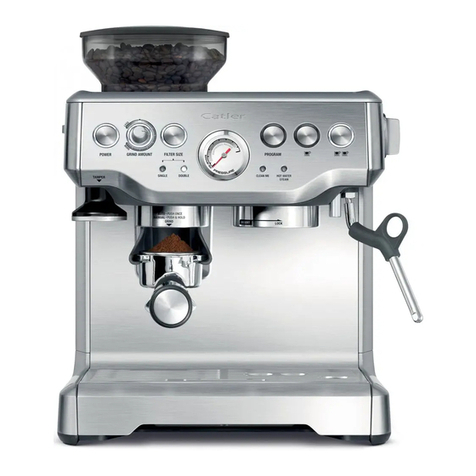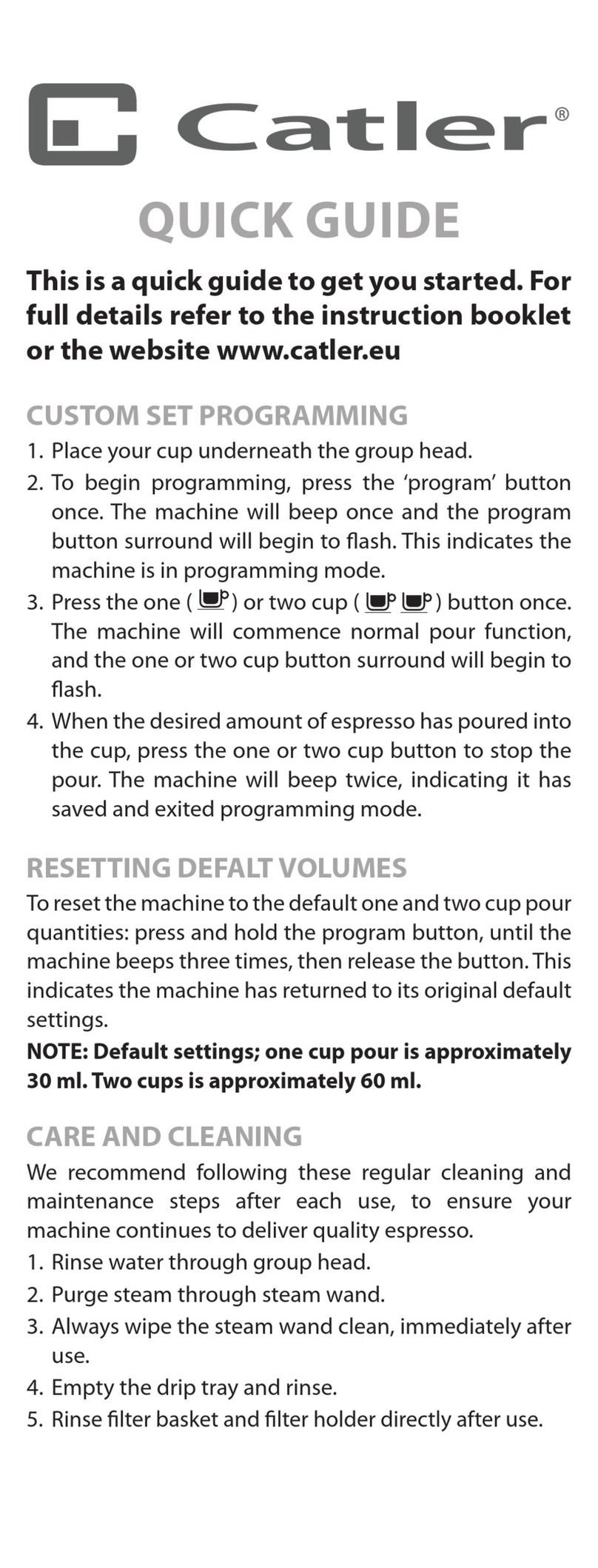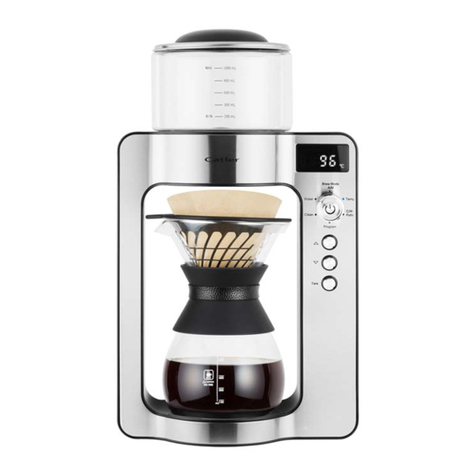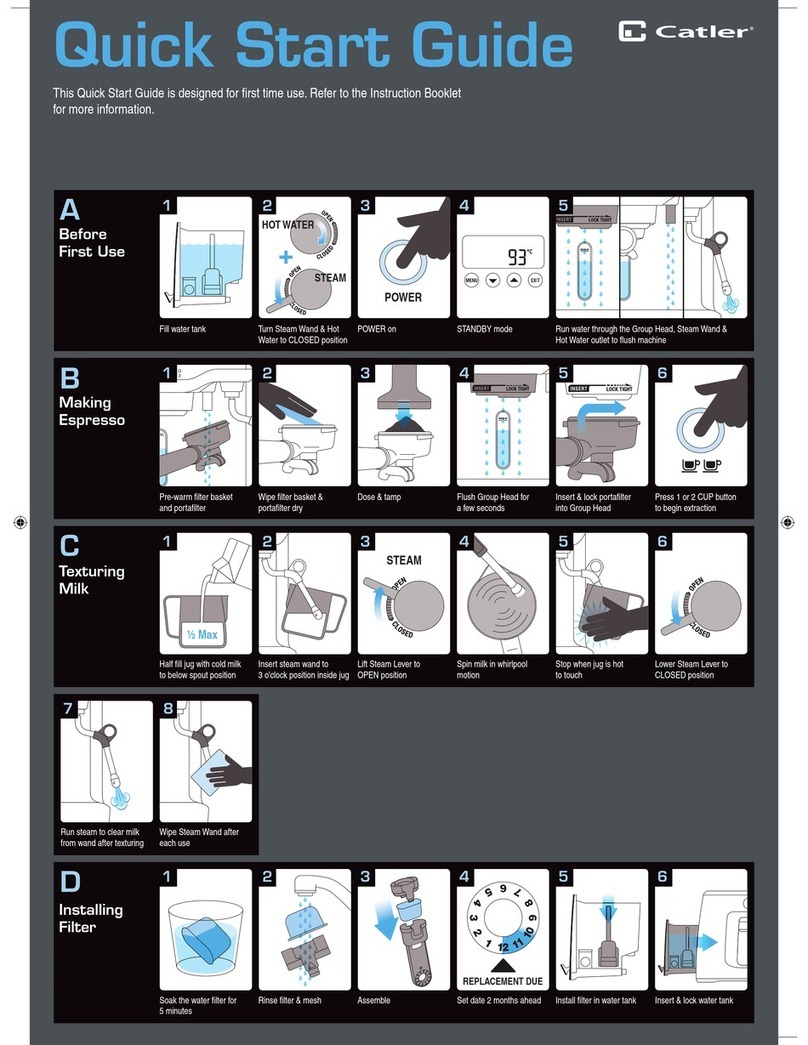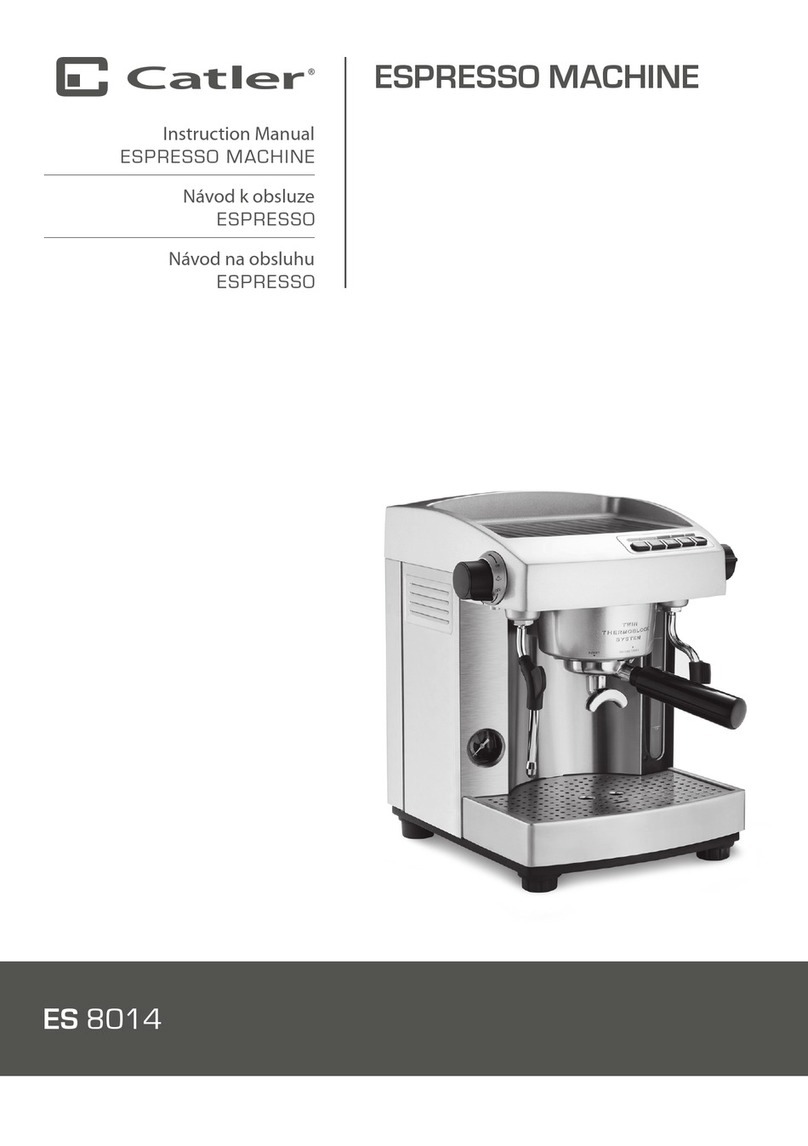
CATLER RECOMMENDS SAFETY FIRST
WeatCatler are very safety conscious. Wedesignand manufacture consumer products with
thesafety of you, our valued customer, foremost in mind. In addition, weask thatyou exercise
a degree of care when using any electrical appliance and adhere to thefollowing precautions.
IMPORTANT SAFEGUARDS FOR YOUR ESPRESSO MACHINE ES 4010
• Carefully read all instructions before
operating and savefor future reference.
• Removeany promotional stickers or tags
before using theEspresso Machine for
therst time.
• Donot place theEspresso Machine near
theedgeof a bench of tableduring
operation. Ensure thesurface is level,
cleanand free of water, etc.
• Donot place theEspresso Machine on
or neara hot gasor electric burner, or
where it could touch a heated oven.
• Donot use on metal surfaces, for
examplea sink drain board.
• Alwaysensure theEspresso Machine is
properly assembled before connecting
to thepower outlet and operating.
• Never plug in or switch on theEspresso
Machine without water in thewater tank.
• Only use cold water in thewater tank. Do
not use any other liquid.
• Warning: Donot removethewater tank
whiletheEspresso Machine is in use.
• Ensure thelter holder is rmly inserted
and secured into thebrewing head
before using theEspresso Machine.
• Never removethelter holder during
thebrewing operation asthemachine is
under pressure.
• Donot leavetheEspresso Machine
unattended when in use.
• Donot touch hot surfaces. Allow the
Espresso Machine to cool downbefore
moving or cleaning any parts.
• Donot place anything, other thancups
for warming, on top of theEspresso
Machine.
• Alwaysswitch theEspresso Machine
o, switch thepower oatthepower
outlet and then removetheplug when
theappliance is to beleft unattended,
if not in use, before cleaning, before
attempting to movetheappliance,
disassembling, assembling and when
storing theappliance.
• Keep theappliance and accessories
clean. Follow thecleaning instructions
provided in this book.
• Toprevent damageto theappliance, do
not use alkaline cleaning agents when
cleaning. Use a soft cloth and a mild
detergent.
4
CATLER RECOMMENDS SAFETY FIRST

